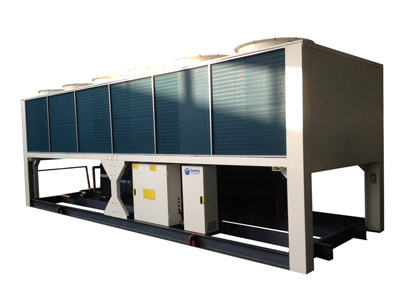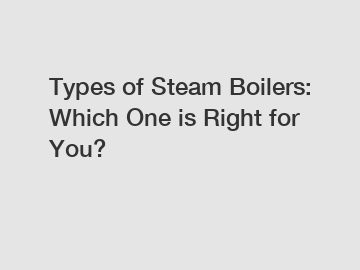Basic Difference Between an AC and Chiller System
Air conditioning (AC) and chiller systems are both used for cooling indoor spaces, but they operate on different principles and are suitable for different applications. In this article, we'll explore the fundamental differences between AC and chiller systems to help you understand their distinct roles and functionalities in cooling technology.
1. Operating Principle:
AC System: An air conditioning system works on the principle of vapor compression refrigeration. It absorbs heat from indoor air through an evaporator coil, transfers it to the outdoor condenser unit, and releases it into the atmosphere. The cooled air is then circulated back into the indoor space, lowering the temperature and humidity levels.
Chiller System: A chiller system also operates on the vapor compression cycle but is designed to cool water or other liquid coolant instead of air. The chilled water is then circulated through a network of pipes to absorb heat from indoor spaces, industrial processes, or equipment, providing efficient cooling across large areas or buildings.
2. Cooling Medium:
AC System: Air conditioning systems directly cool and dehumidify the air in indoor spaces. They are commonly used in residential, commercial, and small-scale applications to maintain comfortable temperatures and humidity levels indoors.
Chiller System: Chiller systems cool water or a specialized coolant, which is then distributed through pipes to air handling units, fan coil units, or process equipment. They are typically used in larger buildings, industrial facilities, data centers, and commercial complexes where centralized cooling is required.
3. Cooling Capacity:
Additional reading:Things You Should Know Before Renting or Buying a Chiller
Plating and Anodizing Rectifiers
Scratch and Dent Air Conditioners and More
How to Choose Condensing Units Size
What are some ways that an air-cooled condenser can be made more efficient?
Is the Copeland Scroll Condensing Unit Overrated?
Revolutionizing Food Preservation: Is Cold Room Refrigeration A Game Changer?AC System: Air conditioning units are designed for localized cooling and are suitable for cooling individual rooms, apartments, or small buildings. They have lower cooling capacities compared to chillers and are optimized for comfort cooling in smaller spaces.
Chiller System: Chillers are capable of providing high-capacity cooling for large-scale applications, such as office buildings, hospitals, manufacturing plants, and shopping malls. They can handle the cooling demands of multiple zones or floors within a building and are often part of a centralized HVAC (Heating, Ventilation, and Air Conditioning) system.
4. System Components:
AC System: Typical components of an air conditioning system include an indoor evaporator coil, outdoor condenser unit, compressor, expansion valve, and air handling unit (AHU) or ductwork. These components work together to extract heat from indoor air and maintain comfortable temperatures indoors.
Chiller System: A chiller system consists of a chiller unit (compressor, evaporator, condenser), chilled water storage tank, pumps, cooling towers (for air-cooled chillers), and distribution piping. The chiller unit generates chilled water, which is then circulated through the building's HVAC system to provide cooling to various spaces or processes.
Conclusion:
In summary, while both air conditioning and chiller systems are used for cooling purposes, they differ in terms of operating principles, cooling mediums, cooling capacities, and system components. AC systems are suitable for localized cooling in residential and small commercial spaces, while chiller systems are designed for large-scale cooling applications in commercial buildings, industrial facilities, and complex infrastructures. Understanding the distinctions between these systems is essential for selecting the most appropriate cooling solution for specific cooling requirements and building configurations.
Everything You Need to Know About Cold Room Refrigeration Units
Essential Tips for Safe Drug Cold Storage
Why water cooled screw chillers are essential?
5 Reasons Why Screw Type Compressor Condensing Units Excel
12 Ways To Save On Air Conditioning Costs
Key Questions to Ask When Selecting the Ultimate Strapping Dispenser Guide
The Benefits of Using Private Label EV Battery Pack Assembly










Comments
0